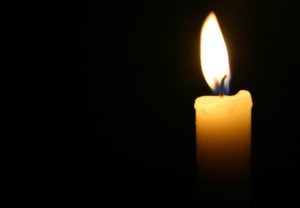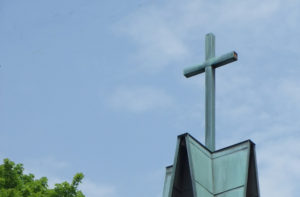
The Story
Third Sunday of Easter
April 26, 2020
Luke 24:13-25
Now on that same day two of Jesus’ disciples were going to a village called Emmaus, about seven miles from Jerusalem, and talking with each other about all these things that had happened. While they were talking and discussing, Jesus himself came near and went with them, but their eyes were kept from recognizing him. And he said to them, “What are you discussing with each other while you walk along?”
They stood still, looking sad. Then one of them, whose name was Cleopas, answered him, “Are you the only stranger in Jerusalem who does not know the things that have taken place there in these days?” He asked them, “What things?”
They replied, “The things about Jesus of Nazareth, who was a prophet mighty in deed and word before God and all the people, and how our chief priests and leaders handed him over to be condemned to death and crucified him. But we had hoped that he was the one to redeem Israel. Yes, and besides all this, it is now the third day since these things took place. Moreover, some women of our group astounded us. They were at the tomb early this morning, and when they did not find his body there, they came back and told us that they had indeed seen a vision of angels who said that he was alive. Some of those who were with us went to the tomb and found it just as the women had said; but they did not see him.”
Then he said to them, “Oh, how foolish you are, and how slow of heart to believe all that the prophets have declared! Was it not necessary that the Messiah should suffer these things and then enter into his glory?” Then beginning with Moses and all the prophets, he interpreted to them the things about himself in all the scriptures. As they came near the village to which they were going, he walked ahead as if he were going on. But they urged him strongly, saying, “Stay with us, because it is almost evening and the day is now nearly over.” So he went in to stay with them.
When he was at the table with them, he took bread, blessed and broke it, and gave it to them. Then their eyes were opened, and they recognized him; and he vanished from their sight.
They said to each other, “Were not our hearts burning within us while he was talking to us on the road, while he was opening the scriptures to us?” That same hour they got up and returned to Jerusalem; and they found the eleven and their companions gathered together. They were saying, “The Lord has risen indeed, and he has appeared to Simon!” Then they told what had happened on the road, and how he had been made known to them in the breaking of the bread.

Something to Do
Breaking of the Bread
Our collective desire to bake bread in response to the pandemic is a fascinating thing – and a frustrating one if you are trying to supply yourself with the necessary supplies. If you are fortunate enough, however, to have a stock of flour and yeast or sourdough starter or even baking powder/soda, bake some bread this week. When you eat it, take a moment to bless it and break it and remember that Jesus is with you.
If you are in need of a recipe, you could give Thomas’ no-knead sandwich loaf a try (our household plus the senior youth group can attest to its deliciousness):
- 6 cups all-purpose white or whole wheat flour (or a mix)
- 1 tbsp instant yeast
- 2 1/2 teaspoons kosher salt
- 3 cups water, room temperature
1. In a large bowl, combine the dry ingredients. Whisk together.
2. Add the water and mix well.
3. Cover and let rise 4 hours.
4. Butter a 12 x 4.5 inch loaf pan.
5. Using hands, scoop dough into loaf pan, squishing it to fill the pan.
6. Cover with tea towel and let rise 1 hour.
7. Heat oven to 425 F.
8. Bake for about 30 minutes. The loaf will sound hollow when tapped.
Or, if you need something with no yeast, you could try one of these :
- Altar Bread from the Society of St. John the Evangelist (this is the bread Derek makes for us at church)
- Bannock for either the oven or the stope top
- Irish Soda Bread (or do a quick google search for a version with raisins and sugar)
“Are you the only stranger in Jerusalem who does not know the things that have taken place there in these days?”
I wonder if the occasion to tell the story of Jesus death was a relief or a frustration to the disciples. If you think it might have been a relief, perhaps you would like to imagine you are meeting someone who has just arrived on earth and has no idea what is going on. Why are the stores closed? Why is no one at school? Why is everyone online all the time? How would you tell the story of the things that have taken place these past weeks?

Something to Wonder
Recognizing Jesus
One possible explanation for why Jesus’ own friends seemed to have a hard time recognizing him after his resurrection is that their brains simply refused to suggest something so obviously impossible to them. Jesus is dead. This man I am talking to is not dead. Therefore, this man I am talking to cannot be Jesus.
In this week’s story, the disciples are finally able to recognize him when he breaks and blesses the bread at dinner, something they must have seen him do many times before.
- What are the things that help you recognize Jesus or that help you realize you are in God’s presence?
- What are the assumptions you make that get in your way to see God’s presence?
“How slow of heart…were not our hearts burning within us”
We are reminded that our hearts are an important source of knowing, offering us wisdom and insights and pathways to understanding that should not be ignored.
- What is your heart telling you these days?
- What is your heart resisting?
- What is your heart yearning for?

Something to Learn
Bread in a pandemic
People are making bread! These two articles reflect on why that is:
The science behind why everyone is suddenly baking bread from the Globe and Mail
Stress baking more than usual from the New York Times
Being disciples
The question of what it means to be a disciples of Jesus was active before Jesus’ death as well as after his resurrection. The Story at the Rectory will be reading Rowan Williams’ book on the topic, Being Disciples: Essentials of the Christian Life, beginning with chapter 1 on May 7th. The book is easily available in both print and e-book versions and the first chapter (only) is available as a PDF. Read it on your own or join us via Zoom in a few weeks and explore what being a disciple means to you.

Something to Pray
Holy God, we do not always understand your word or your ways.
Give us wisdom and imagination and courage as we learn and grow.
The story this week has made me wonder about…
(what questions are still on your heart?)
Receive my questions and help me hear your answers.
The story this week has filled me with…
(how are you feeling?)
Accept my praise, heal my hurt, ease my worry.
The story this week has reminded me of…
(are there situations or people you are thinking of?)
Be with all who are in need of you.
In Jesus’ name, we pray.
Amen.

